|
|












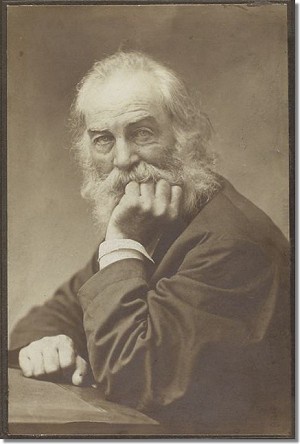

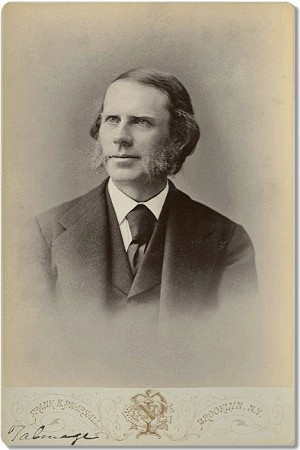

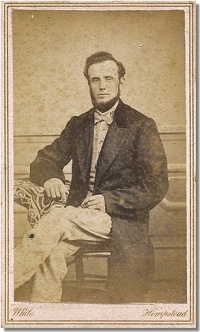




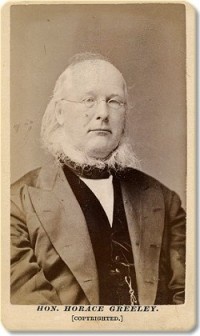



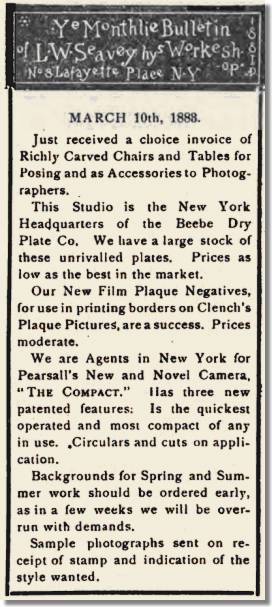
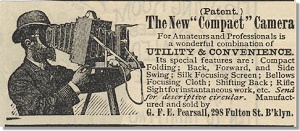




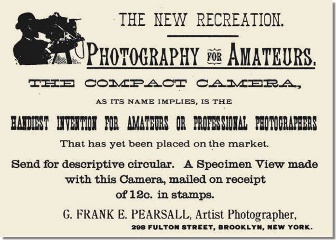
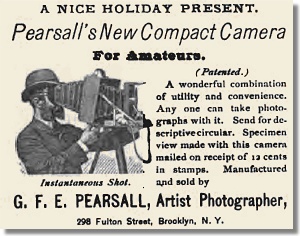

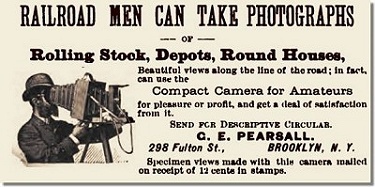

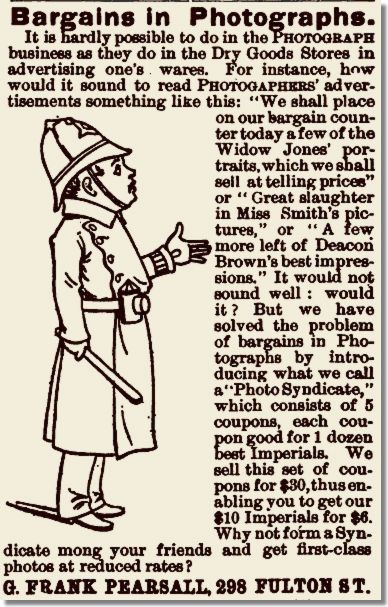





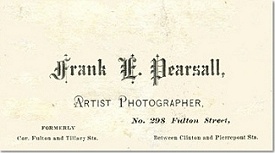
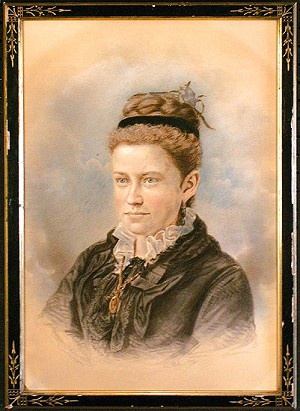


Copyright ©2013 by Rob Niederman - ALL RIGHTS RESERVED
Refer to these Historic Camera links for additional information about Frank and Alva
Visit the Pearsall Compact Camera page
Visit the Pearsall Patents page
More ads can be found in the Camera Advertising & Reference page
Visit the Pearsall Compact Camera page
Visit the Pearsall Patents page
More ads can be found in the Camera Advertising & Reference page
Multi-Lens Cameras | View Cameras | Self-Casing Cameras | Solid Body Cameras | References & Advertisements
Home | What's New | Show Schedule | Wanted | For Sale | Links | Site Map | Email
Home | What's New | Show Schedule | Wanted | For Sale | Links | Site Map | Email
Key Events and References
G.F.E. Pearsall. Brooklyn, NY.
G.F.E. Pearsall. Brooklyn, NY.
1890s to 1906(?) According to historian Peter Nash in
his book Baseball Legends of Brooklyn's Green-Wood
Cemetery, Pearsall was an "avid fan of the national
game and became close friends with Henry Chadwick.
Over the years, Pearsall served as Chadwick's personal photographer and rendered portraits for the 'father of the game' each year for his birthday, most of which graced the pages of the annual Spalding League Guide."
Nash also notes that "Henry Chadwick reported that Pearsall invented a portable camera appropriate for baseball."
Image Source: New York Public Library digital archives
Over the years, Pearsall served as Chadwick's personal photographer and rendered portraits for the 'father of the game' each year for his birthday, most of which graced the pages of the annual Spalding League Guide."
Nash also notes that "Henry Chadwick reported that Pearsall invented a portable camera appropriate for baseball."
Image Source: New York Public Library digital archives
Alva b.1839
Frank b.1841
Velocipede Academy 1869
Source: Smithsonian Institution
Source: Smithsonian Institution
1870-71 Frank opens his gallery; exhibits
photography and crayon drawings.
1872 Portraits
Walt Whitman (Source: NYPL)
Horace Greeley
1873 Portraits
• Gertrude Kellogg (actress)
• Roger A. Pryor (congressman, confederate general)
• Henry Ward Beecher & Wife (preacher, orator)
• Reverend Dr. Thomas De Witt Talmage
• Gertrude Kellogg (actress)
• Roger A. Pryor (congressman, confederate general)
• Henry Ward Beecher & Wife (preacher, orator)
• Reverend Dr. Thomas De Witt Talmage
1874 Pearsall employees
Courtesy of Marcel Safier
Courtesy of Marcel Safier
1883 Frank patents his Compact Camera and starts advertising
1880 Fulton Street gallery tradecard
The first reference of Frank's Compact Camera;
March 10, 1883 advertisement by Seavey as an
agent for the new camera one month before
the patent was awarded.
1883 advertisment for the New "Compact
Camera" - Utility & Convenience. The illustration
of a photographer peering into a rear bellows is
represented in nearly all future advertisements.
1884 Frank's advertising grows with reviews and targets specific interests and markets.
1885 This April reference by Frank advocates cost control of photographs
through the creation of a "PhotoSyndicate" using coupons.
1891
Right: Pearsall endorses Gray's Extreme-angle Periscope Lens.
Far Right: To remain competitive with his brother Alva, Frank announces a portrait style called "Knarfograph" - which is Frank's name spelled backwards.
Right: Pearsall endorses Gray's Extreme-angle Periscope Lens.
Far Right: To remain competitive with his brother Alva, Frank announces a portrait style called "Knarfograph" - which is Frank's name spelled backwards.
Frank Pearsall, who later owned Howell's Brooklyn studio, was a "positionist"
for photographer Jeremiah Gurney.
Frank's brother Alva was a camera operator for Mathew Brady in 1871.
Source: Anthony Bulletin Volume 23 (1892)
Frank's brother Alva was a camera operator for Mathew Brady in 1871.
Source: Anthony Bulletin Volume 23 (1892)
Later portrait of Frank Pearsall
Image Source: New York Public Library digital archives
Image Source: New York Public Library digital archives
"Visitors to the fair of the American
Institute, in the department of Art
Photography, will find an admirable
display of imperial card photographs,
porcelain and ivory miniatures, and
colored crayons from the gallery of G.F.E
Pearsall, of this city. Some of the
miniatures are finely executed, and a life
size portrait of a young and beautiful
girl, finished in colored crayons, is very
attractive for the spirit shown in the
pose of the figure and its delicacy of
outline. Mr. Pearsall is the only exhibitor
in the fine art department from Brooklyn,
with the exception of a Mr. Senior, who
contributes two or three crayon heads."
Source: Brooklyn Daily Eagle.
September 14, 1871
Source: Brooklyn Daily Eagle.
September 14, 1871
This 1884 'railroad men' advertisement is
interesting because it could have been
Frank's way of piggybacking onto the
November 1883 institutionalization of
Standard time in time zones by U.S. and
Canadian railroads to standardize their
schedules. Prior to this significant event,
most cities and towns used local solar time.